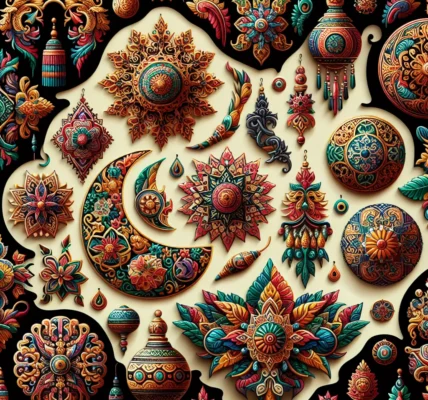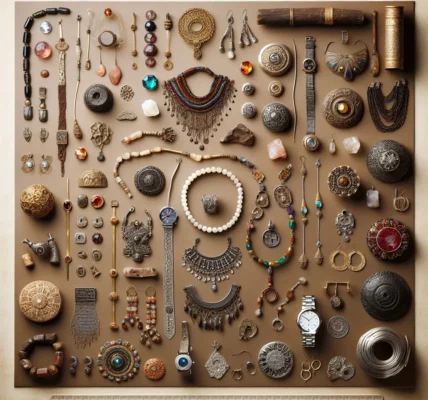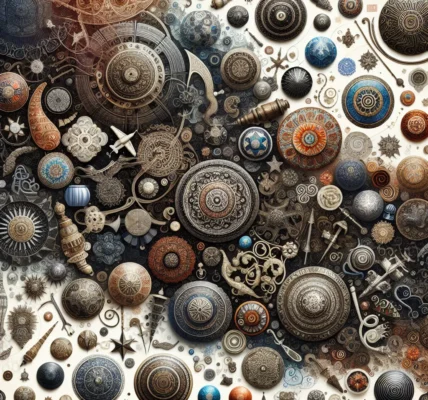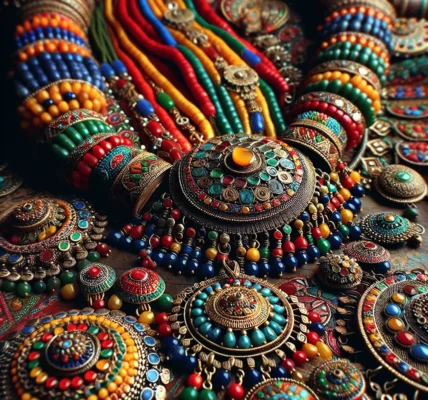The Evolution of Ornaments in Art through the Ages
Ornaments have been an integral part of art and fashion throughout history, evolving in style, materials, and significance over the ages. The evolution of ornaments in art can be traced back to ancient civilizations, where they were used not only for aesthetic purposes but also as symbols of status, power, and cultural identity.
In ancient Egypt, for example, ornaments such as amulets, scarabs, and diadems were not only decorative but also held religious and spiritual significance. These ornaments were crafted from precious metals, gemstones, and colorful glass, showcasing the skill and craftsmanship of the artisans of that era.
During the Renaissance period, ornaments in art became more elaborate and intricate, reflecting the artistic and cultural advancements of the time. Ornamentation in paintings, sculptures, and architecture flourished, with motifs inspired by classical mythology, nature, and religious symbolism.
The Baroque and Rococo periods saw a further proliferation of ornamental design, characterized by opulence, exuberance, and a sense of drama. Ornate patterns, intricate scrollwork, and detailed embellishments adorned everything from clothing and jewelry to interior decor, reflecting the luxurious tastes of the aristocracy and the burgeoning bourgeoisie.
The 20th century brought about a shift in the approach to ornaments in art, with the rise of modernism and minimalism challenging the elaborate ornamentation of the past. However, ornamentation never truly disappeared; it simply adapted to the changing aesthetics and ideologies of the time.
Today, ornaments in art continue to evolve, influenced by technological advancements, cultural exchange, and contemporary design trends. From traditional handcrafted ornaments to innovative digital creations, the evolution of ornaments in art remains a reflection of human creativity, expression, and cultural identity.
Understanding the evolution of ornaments in art through the ages provides a valuable insight into the cultural, social, and artistic developments of different eras, showcasing the enduring significance of ornaments in shaping our visual landscape.
Ornamentation as a Symbol of Status and Identity
Throughout history, ornaments have played a significant role in representing the status and identity of individuals in art and fashion. The use of ornaments as a symbol of status can be traced back to ancient civilizations, where ornate jewelry and decorative objects were reserved for the wealthy and influential members of society. In many cultures, the type and quantity of ornaments a person wore indicated their social standing and power.
In art, the inclusion of elaborate ornaments in portraits and sculptures was often used to convey the wealth and importance of the subject. For example, during the Renaissance period, wealthy patrons would commission portraits adorned with luxurious accessories and intricate details to showcase their prosperity and influence. Similarly, in fashion, the use of ornate embellishments and opulent fabrics has long been associated with the elite and aristocratic class.
As society evolved, the significance of ornaments as a symbol of status and identity persisted. In the modern era, designer labels and luxury brands have become emblematic of social status, with their ornate logos and signature designs serving as a form of visual ornamentation that communicates prestige and exclusivity. Additionally, the use of personalized ornaments, such as monogrammed jewelry and custom accessories, continues to be a means for individuals to express their identity and individuality.
In conclusion, the role of ornaments as a symbol of status and identity has been a constant theme throughout the history of art and fashion. From ancient civilizations to the modern era, ornaments have served as a powerful visual language, conveying wealth, power, and personal identity.
Influential Ornamentation Trends in Art and Fashion History
Throughout history, ornaments have played a significant role in both art and fashion, reflecting the aesthetic preferences and cultural values of different time periods. One of the influential ornamentation trends in art and fashion history can be traced back to the ancient civilizations of Egypt and Mesopotamia. Ornate jewelry, intricate patterns, and symbolic motifs adorned the garments and accessories of the elite, symbolizing wealth and status.
During the Renaissance period, ornamental elements in art and fashion became more elaborate and exquisite. The intricate detailing of garments and the use of luxurious materials such as velvet and silk reflected the opulence of the era. Ornamentation in art also flourished, with elaborate designs adorning architecture, paintings, and sculptures.
The Rococo period in the 18th century embraced ornamental exuberance, characterized by delicate floral motifs, pastel colors, and asymmetrical designs. This ornate style transcended into fashion, influencing the creation of elaborate gowns and accessories adorned with lace, ribbons, and intricate embroidery.
The 20th century witnessed a shift towards modernism, with influential artists and designers like Coco Chanel and the Bauhaus movement embracing simplicity and minimalism in contrast to the ornate styles of the past. However, ornamentation in art and fashion persisted, with motifs inspired by nature, geometry, and cultural symbols being incorporated into modernist designs.
Today, ornamentation continues to evolve, with contemporary artists and fashion designers drawing inspiration from diverse sources such as technology, global cultures, and sustainability. Modern ornamentation trends often blend traditional craftsmanship with innovative techniques, creating a dynamic fusion of the past and the present in art and fashion.
In conclusion, the history of ornaments in art and fashion reveals a fascinating interplay between cultural, social, and artistic influences. From the opulent adornments of ancient civilizations to the minimalist elegance of modern design, ornamentation trends have shaped the visual language of human expression, reflecting the ever-changing dynamics of society and creativity.
Contemporary Interpretations of Ornaments in Art and Fashion
Contemporary Interpretations of Ornaments in Art and Fashion
The use of ornaments in art and fashion has evolved significantly over time, with contemporary interpretations offering a fresh perspective on traditional adornment. In the world of art, contemporary artists are reimagining the concept of ornaments by integrating them into their work in innovative ways. Whether it’s through mixed media, digital art, or site-specific installations, ornaments are being used to challenge conventional artistic boundaries and stimulate new forms of expression.
In the realm of fashion, contemporary designers are incorporating ornaments into their collections to create visually striking and conceptually rich pieces. From intricate beading and embroidery to bold embellishments and ornate jewelry, ornaments are being utilized to add depth and character to garments. Furthermore, contemporary fashion brands are exploring sustainable and ethical approaches to ornamentation, utilizing recycled materials and artisanal techniques to create unique and eco-conscious pieces.
The contemporary interpretations of ornaments in art and fashion reflect a shift towards individualism, sustainability, and the celebration of diverse cultural influences. By incorporating ornaments into their creations, artists and designers are able to convey meaningful narratives, evoke emotions, and spark conversations about identity, heritage, and the human experience.
In conclusion, the contemporary interpretations of ornaments in art and fashion showcase a dynamic fusion of tradition and innovation. As artists and designers continue to push boundaries and experiment with new materials and techniques, ornaments will undoubtedly remain a captivating and enduring facet of creative expression.
Finally, these contemporary trends in ornamentation reflect the growing interest in sustainable and ethically produced fashion, as well as the celebration of diverse cultural influences within the art world. As artists and designers continue to push boundaries and experiment with new materials and techniques, ornaments will undoubtedly remain a captivating and enduring facet of creative expression.




